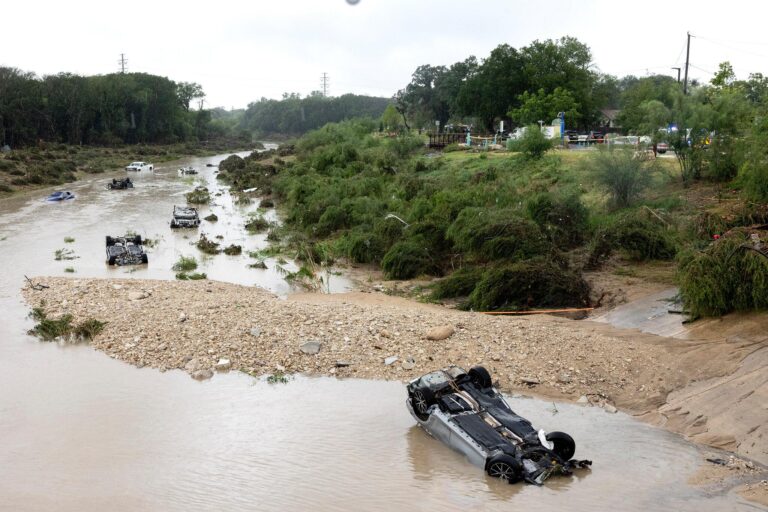San Antonio Flash Floods Trigger Massive Destruction and Fatalities
Intense and sudden flash floods have ravaged San Antonio, resulting in the tragic deaths of over a dozen individuals and displacing numerous families. Within moments, streets transformed into torrents of rushing water, leaving many residents trapped and daily routines severely disrupted. Emergency personnel are tirelessly navigating flooded and damaged roadways to reach those in peril. Local hospitals are operating at full capacity, treating injuries caused by fast-moving water and debris. Authorities strongly advise residents to stay indoors and avoid unnecessary travel until conditions improve.
The city’s disaster response teams have deployed multiple units, including search and rescue squads, medical support teams, and temporary housing facilities. Communication lines have been established to assist vulnerable groups, and evacuation protocols are actively being implemented. Immediate objectives focus on:
- Reinstating electricity and water supply to affected areas
- Evaluating damage to residential and public infrastructure
- Collaborating with state and federal agencies to sustain relief operations
| Emergency Unit | Resources Deployed | Operational Status |
|---|---|---|
| Fire Department | 20 rescue boats, 35 response teams | Ongoing rescue missions |
| Medical Services | 15 mobile health clinics | Supporting hospital care |
| Police Department | 50 patrol units managing traffic | Securing evacuation corridors |
Coordinated Community and Rescue Initiatives Address Crisis
Following the unprecedented flooding, San Antonio’s local government, emergency teams, and volunteers have swiftly united to provide critical assistance. Rescue efforts involve deploying boats and helicopters to access isolated neighborhoods. Multiple shelters have been established citywide to house displaced residents, offering essentials such as food, clean water, and medical attention. Additionally, community centers and faith-based organizations have opened their doors to extend support and resources to those affected.
Ongoing key initiatives include:
- Joint search and rescue operations with the National Guard and fire services
- Distribution of emergency supplies like blankets, bottled water, and hygiene kits
- Prioritization of medical care for critical injuries and vulnerable individuals
- Outreach programs targeting at-risk groups, including seniors and persons with disabilities
| Organization | Function | Current Activity |
|---|---|---|
| San Antonio Fire Department | Rescue and evacuation | Active 24/7 operations |
| American Red Cross | Shelter management and relief distribution | Operating five shelters |
| National Guard | Logistics and security support | Deployed with 300 personnel |
| Local Volunteers | Community outreach and aid | Organizing neighborhood assistance teams |
Understanding the Weather Phenomena Behind San Antonio Floods
The severe flash flooding in San Antonio was driven by a rare convergence of meteorological factors. A stationary cold front collided with warm, moisture-laden air streaming from the Gulf of Mexico, creating conditions ripe for intense and sustained rainfall. This atmospheric interaction, combined with rapid urban development that limits natural water absorption, caused floodwaters to rise rapidly. Meteorologists noted that localized storm cells intensified the downpours, producing sudden, heavy rainfall over concentrated areas.
Primary factors contributing to the flooding:
- A persistent low-pressure system trapping moisture above the region
- Urban sprawl reducing permeable surfaces and increasing runoff
- Insufficient drainage infrastructure overwhelmed by extreme rainfall volumes
- Elevated humidity levels accelerating storm formation and intensity
| Weather Element | Effect | Duration |
|---|---|---|
| Stationary Cold Front | Continuous precipitation supply | Approximately 48 hours |
| High Humidity | Enhanced storm strength | Throughout the event |
| Localized Convection Cells | Intense, short-lived downpours | Minutes per burst |
Essential Preparedness Strategies and Safety Guidelines for Flood-Prone Areas
In light of the devastating flash floods, it is imperative for residents and officials to enhance preparedness and adopt robust safety measures. Individuals should assemble emergency kits containing essentials such as potable water, non-perishable foods, flashlights, and first aid materials to ensure readiness during sudden flood events. Establishing clear evacuation routes and maintaining open communication with family members can drastically reduce confusion and save lives during emergencies. Staying updated with trustworthy weather forecasts and flood warnings is vital for timely action.
Recommended safety practices include:
- Elevate electrical systems and appliances above expected flood levels to prevent damage.
- Never attempt to drive or walk through flooded roadways; as little as six inches of moving water can cause loss of vehicle control, and two feet can sweep vehicles away.
- Store important documents in waterproof containers to protect identity and insurance information.
- Engage in community flood preparedness drills and support local initiatives aimed at improving flood resilience.
| Preparedness Measure | Advantage |
|---|---|
| Assemble Emergency Kit | Ensures access to vital supplies during power outages |
| Plan Evacuation Routes | Enables swift and safe evacuation from hazardous zones |
| Monitor Weather Alerts | Provides early warnings for informed decision-making |
| Participate in Drills | Prepares the community for coordinated emergency response |
Final Thoughts on San Antonio Floods and the Path Forward
As San Antonio embarks on the challenging journey of recovery, officials continue to evaluate the extensive damage caused by the catastrophic flash floods that have claimed numerous lives. Emergency teams remain vigilant, supporting communities as they navigate the aftermath. Authorities emphasize the importance of staying alert to ongoing weather developments and maintaining preparedness for future events. This disaster serves as a powerful reminder of the devastating potential of sudden natural calamities and the critical need for proactive safety measures and rapid response. Updates will be provided as the situation evolves.




